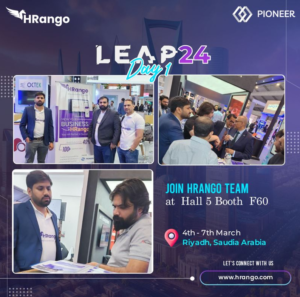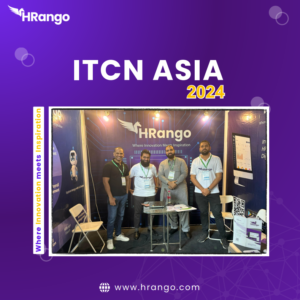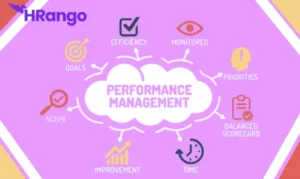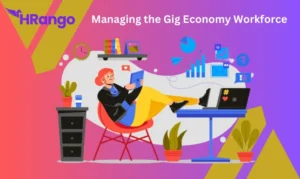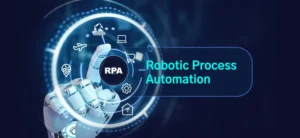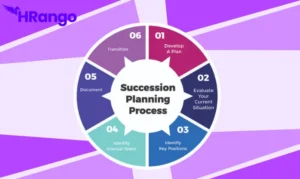In today’s rapidly evolving technological landscape, the integration of Human Resource Management Systems (HRMS) with Internet of Things (IoT) devices is transforming how businesses manage their workforce. This advanced approach enables real-time employee monitoring and analytics, offering unprecedented insights into workforce behavior, productivity, and overall workplace dynamics. As companies strive to enhance operational efficiency and employee engagement, HRMS-IoT integration is emerging as a game-changer, providing valuable data that can drive informed decision-making.
Understanding HRMS and IoT Integration
HRMS is a comprehensive software solution that streamlines various HR functions, such as payroll, recruitment, employee management, and performance tracking. When combined with IoT devices, which are interconnected physical objects capable of collecting and transmitting data, HRMS can extend its functionality to monitor employees in real-time. IoT devices can include smart badges, wearable technology, environmental sensors, and even connected cameras, all working together to provide continuous data on employee activities and workplace conditions.
The integration of HRMS with IoT devices allows organizations to collect a wealth of data related to employee behavior, work patterns, and interactions within the workplace. This data is then processed and analyzed through the HRMS platform like hRango, providing valuable insights that can be used to optimize workforce management, improve employee well-being, and enhance productivity.
Benefits of HRMS-IoT Integration
1. Enhanced Employee Monitoring and Safety
IoT devices can track employee locations, movements, and interactions within the workplace. This capability is particularly valuable in environments where employee safety is a priority, such as manufacturing plants, construction sites, or healthcare facilities. For instance, smart badges can alert management if an employee enters a hazardous area, enabling immediate intervention. Additionally, wearable devices can monitor vital signs, detecting signs of fatigue or stress, which can prevent accidents and promote a healthier work environment.
2. Improved Productivity and Efficiency
By monitoring employee activities in real-time, organizations can identify patterns and trends that impact productivity. For example, IoT devices can track how employees use their time, identifying inefficiencies or bottlenecks in workflows. This data allows managers to make informed decisions on task assignments, resource allocation, and process improvements. Additionally, real-time analytics can highlight top-performing employees and teams, enabling targeted recognition and rewards programs that further boost morale and productivity.
3. Data-Driven Decision Making
The integration of HRMS with IoT devices provides a continuous stream of data that can be analyzed to gain insights into various aspects of workforce management. This data-driven approach allows organizations to make informed decisions on employee scheduling, training, and development. For example, if data shows that employees are most productive during specific hours, managers can adjust work schedules to maximize output. Similarly, data on employee interactions and collaboration can inform team-building strategies and organizational restructuring.
4. Personalized Employee Experience
HRMS-IoT integration can also enhance the employee experience by enabling personalized feedback and support. For instance, wearable devices can track an employee’s physical activity and health metrics, allowing the HRMS to offer tailored wellness programs or ergonomic interventions. Moreover, real-time feedback on performance and productivity can help employees identify areas for improvement, fostering a culture of continuous development and engagement.
5. Compliance and Reporting
In industries with strict regulatory requirements, HRMS-IoT integration can simplify compliance and reporting. IoT devices can automatically log employee hours, track compliance with safety protocols, and generate reports for regulatory bodies. This automated approach reduces the administrative burden on HR teams and ensures that organizations remain compliant with labor laws and industry standards.
Challenges and Considerations
While the benefits of HRMS-IoT integration are substantial, organizations must also consider the challenges associated with implementing this technology. Privacy concerns are a significant issue, as employees may feel uncomfortable with constant monitoring. It is crucial for organizations to be transparent about the data being collected, how it will be used, and to implement robust data security measures to protect employee information.
Another consideration is the cost of deploying IoT devices and integrating them with existing HRMS platforms. Organizations must weigh the initial investment against the long-term benefits of improved productivity, safety, and employee engagement.
hRango: A Case Study in HRMS-IoT Integration
hRango, a cutting-edge HRMS platform, has successfully integrated IoT capabilities to offer real-time employee monitoring and analytics. By leveraging IoT devices, hRango provides organizations with a comprehensive view of their workforce, from tracking employee attendance to monitoring workplace safety. HRango’s platform allows managers to access real-time data on employee performance, enabling proactive decision-making and fostering a more efficient and engaged workforce.
hRango’s success demonstrates the potential of HRMS-IoT integration in transforming workforce management. By providing real-time insights, hRango helps organizations optimize their operations, enhance employee satisfaction, and achieve their business objectives.
Conclusion
The integration of HRMS with IoT devices represents a significant advancement in workforce management. By enabling real-time employee monitoring and analytics, organizations can gain valuable insights into their workforce, improve productivity, and create a safer and more engaging work environment. As HRMS-IoT integration continues to evolve, it is poised to become a standard practice for businesses seeking to stay competitive in a data-driven world.
FAQs
What is HRMS-IoT integration?
HRMS-IoT integration involves combining Human Resource Management Systems with IoT devices to monitor and analyze employee activities and workplace conditions in real-time.
What are the benefits of HRMS-IoT integration?
Benefits include enhanced employee safety, improved productivity, data-driven decision-making, personalized employee experiences, and streamlined compliance.
How does hRango utilize IoT in its HRMS platform?
hRango integrates IoT devices to provide real-time monitoring and analytics, helping organizations optimize workforce management and improve employee engagement.
What challenges should organizations consider when implementing HRMS-IoT integration?
Challenges include addressing privacy concerns, ensuring data security, and managing the costs associated with deploying IoT devices and integrating them with existing systems.


